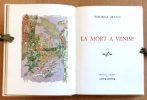540 books for « mann thomas »Edit
-
Latest
Last 3 days (2)
Last month (5)
Last week (1)
-
Language
French (528)
German (1)
Russian (11)
-
Century
20th (332)
21st (6)
-
Countries
Belgium (30)
Denmark (11)
France (443)
Switzerland (45)
United States of America (11)
-
Syndicate
ILAB (290)
NVVA (4)
SLACES (4)
SLAM (264)
Topics
- Abraham (2)
- Adolescence (1)
- Autographs (5)
- Carpenter (1)
- Comedy (1)
- Communism (1)
- Death (1)
- Dostoievsky - dostoievski (1)
- Dussane (1)
- Early printed books (1)
- Engraving (books about) (1)
- Essays (7)
- Family (1)
- First edition (14)
- Genealogy (2)
- Germany (1)
- Gide andré (1)
- Goethe johann wolfgang (3)
- Gold (1)
- Hackney (2)
- Hesse hermann (1)
- Hinduism (1)
- History (6)
- Illustrated books (2)
- Language (1)
- Legends (1)
- Literary criticism (1)
- Literary review (1)
- Literature (6)
- Mann thomas (526)
- Manuscripts (1)
- Memories (1)
- Mendelssohn (1)
- Military arts (1)
- Nazism (1)
- Newspaper (3)
- Newspapers press (6)
- Nietzsche frédéric (1)
- Philosophy (5)
- Picasso (3)
- Policy (1)
- Psychology (1)
- Review (3)
- Reviews (1)
- Sed-rajna gabrielle (1)
- Tchekhov anton (1)
- Testimonies / stories (1)
- War (6)
- Woods & woods’ price lists (1)
Appels aux Allemands.
Exemplaire de Georges Pompidou, signé par Thomas Mann.Un des 60 exemplaires de tête. Paris, Éditions Flinker, (30 septembre) 1948. 1 vol. (145 x 230 mm) de 219 p. Broché, non coupé, sous chemise et étui (Gauché). Edition originale de la traduction française par Pierre Jundt. Un des 60 premiers exemplaires sur vergé (n° 9). 31539 Il est signé par Thomas Mann.
Entre 1940 et 1945, exilé aux États-Unis, Thomas Mann adresse 56 messages radiophoniques mensuels en allemand, diffusés par l'Office of War Information : des allocutions qui visent à éveiller la conscience du peuple allemand face aux atrocités nazies. Dans des formules incisives, Mann qualifie le régime nazi de « système abominable, fondé sur le mensonge, la rapine et l'assassinat », et décrit Hitler comme « un misérable charlatan de l'histoire ». L'on retrouve ici la plume qui s'en était pris depuis 1933 à Hitler. Sa propre préface, écrite à mi-parcours (1942) et présente en tête de l'édition, laissait entendre ses doutes : « Appeler un peuple à la révolte, ce n'est pas encore croire du fond du coeur qu'il en soit capable ». Dès 1946, ces textes sont traduits en français par Pierre Jundt, professeur agrégé d'allemand et connu pour ses traductions d'oeuvres théologiques et littéraires, afin d'être publiées par les Éditions Flinker, tout juste créés en 1947 par Martin Flinker (1895-1986), libraire et critique littéraire d'origine autrichienne qui avait fuit Vienne en 1938 avec son fils Karl. Outre son activité éditoriale, Martin Flinker a également publié plusieurs essais d'écrivains tels que Paul Celan, Joseph Breitbach, Robert Musil et Joseph Roth, contribuant ainsi à la promotion de la culture germanique en France. Son fils poursuivra l'héritage familial en fondant une galerie d'art à Paris, la Galerie Karl Flinker, qui a exposé des artistes majeurs tels que Kandinsky, Klee et Kupka. L'ouvrage est précédé d'une introduction critique d'Edmond Vermeil, résistant et compagnon du général de Gaulle à Londres, spécialiste de l'histoire et de la civilisation allemandes à la Sorbonne. De la bibliothèque de Georges Pompidou, avec ex-libris.
Die Geschichten Jaakobs, roman
Berlin, G. Fischer Velag, impr. Bibliographisches Institut, in Leipzig 1933 In-12 18,5 x 11,5 cm. Reliure éditeur toile mastic, dos lisse orné, pièce de titre noire, LXIV-402 pp., table. Bon exemplaire de la première édition.
Texte allemand. Die Geschichten Jaakobs est le premier volume de Joseph und seine Brüder (Joseph et ses frères), tétralogie romanesque de Thomas Mann écrite entre 1933 et 1943. Après la prise du pouvoir par les Nazis en 1933, la situation de S. Fischer Verlag, jusque-là une des maisons d'édition les plus importantes en Allemagne, devient précaire. Néanmoins, la politique de la maison sera de continuer à publier sans s'attirer les foudres de la censure nazie. C'est ainsi que les deux premiers volets de Joseph et ses frères de Thomas Mann, pourtant en exil, peuvent encore paraître en Allemagne. Bon état d’occasion
Der Tod in Venedig. Novelle. [In: Die Neue Rundschau. XXIIIter Jahrgang der freien Bühne]. - [TRUE FIRST APPEARANCE OF ""THE DEATH IN VENICE""]
Berlin, S. Fischer Verlag, 1912. Royal 8vo. Volumes 1 and 2 (i.e. the entire year) of ""Die neue Rundschau, 1912"" present, in the original half vellum bindings with gilt title to spines, top edge gilt. In remarkably fine condition, with just a bit of soiling to spines and a small crack to upper hinges of volume 1 (""Der Tod in Venedig"" is in vol. 2). Small stamp in Hebrew to front boards and to title-pages. Large engraved book plates (""E. Schwabach-Märzdorff"") to inside of front boards and to front free end-papers. A very nice and clean set.
The true first printing of Thomas Mann's masterpiece, ""The Death in Venice"". Contrary to what is generally believed, the actual first appearance of ""The Death in Venice"" was not the extremely scarce de luxe-edition that appeared in 100 numbered copies in 1912. In fact the work originally appeared (and in its entirety) in the October and November issues (i.e. in the second volume, on pp. 1368-1398 + 1499-1526) of ""Die Neue Rundschau"", 1912. Simultaneusly with this first appearance, Poeschel und Trepte in Leipzig were preparing the luxury edition of the work for Hans von Weber's Hyperionverlag in Munich, as one of his ""Hundertdrucke"". Probably due to the controversial theme of the work, Thomas Mann was hesitant to immediately handing over the manuscript to his regular publisher S. Fisher for him to publish it directly and had settled on the bibliophile edition already before finishing the work. He did give Fischer the work to publish, though, and thus it came to appear both in Fischer's ""Neue Rundschau"", over two months, and with Weber's Hyperionverlag. While the first part of the work was being published in ""Die neue Rundschau"", the luxury edition was being prepared, and in the end, the luxury edition was only issued (shortly) after the second and final part had appeared in ""Die neue Rundschau"" in November 1912. Shortly after the famous luxury edition, in 1913, Fischer published the first trade edition in book form. By 1924, 50.000 copies of the work had appeared in this form. Thomas Mann's disturbing masterpiece, probably the most famous story of obsession ever written, is considered one of the most important literary productions of the 20th century.
Der Tod in Venedig. Novelle. [In: Die Neue Rundschau. XXIIIter Jahrgang der freien Bühne]. - [TRUE FIRST APPEARANCE OF ""THE DEATH IN VENICE""]
Berlin, S. Fischer Verlag, 1912. Royal 8vo. Volumes 1 and 2 (i.e. the entire year) of ""Die neue Rundschau, 1912"" present, in the original half vellum bindings with gilt title to spines. A few pencil annotations on flyleaf. An exceedingly nice and clean set.
The true first printing of Thomas Mann's masterpiece, ""The Death in Venice"". Contrary to what is generally believed, the actual first appearance of ""The Death in Venice"" was not the extremely scarce de luxe-edition that appeared in 100 numbered copies in 1912. In fact the work originally appeared (and in its entirety) in the October and November issues (i.e. in the second volume, on pp. 1368-1398 + 1499-1526) of ""Die Neue Rundschau"", 1912.Simultaneusly with this first appearance, Poeschel und Trepte in Leipzig were preparing the luxury edition of the work for Hans von Weber's Hyperionverlag in Munich, as one of his ""Hundertdrucke"". Probably due to the controversial theme of the work, Thomas Mann was hesitant to immediately handing over the manuscript to his regular publisher S. Fisher for him to publish it directly and had settled on the bibliophile edition already before finishing the work. He did give Fischer the work to publish, though, and thus it came to appear both in Fischer's ""Neue Rundschau"", over two months, and with Weber's Hyperionverlag. While the first part of the work was being published in ""Die neue Rundschau"", the luxury edition was being prepared, and in the end, the luxury edition was only issued (shortly) after the second and final part had appeared in ""Die neue Rundschau"" in November 1912. Shortly after the famous luxury edition, in 1913, Fischer published the first trade edition in book form. By 1924, 50.000 copies of the work had appeared in this form. Thomas Mann's disturbing masterpiece, probably the most famous story of obsession ever written, is considered one of the most important literary productions of the 20th century.
DIETRICH, Marlene - AUDEN,W. H., COWARD, Noël, HEMINGWAY, Ernest, MANN, Heinrich, MANN,Thomas, PAUSTOVSKY, Konstantin, REMARQUE, Erich Maria, RILKE, Rainer Maria, STERNBERG, Josef von.
Reference : 3758
(1960)
EXCEPTIONAL SET OF NINE BOOKS INCRIBED WITH MARLENE DIETRICH'S AUTOGRAPH SIGNED RECOLLECTIONS (two to four pages in length each) of her relationship with their authors :
Exceptional set of nine books inscribed with Marlene Dietrich’s autograph signed recollections (two to four pages in length each) of her relationship with their authors, each of whom has played a prominent role in Dietrich’s life, including former lovers, very close friends and writers whose works had made the most thorough impression on the actress. Each volume has been specially selected around the year 1979 by Dietrich among the books owned by a friend of hers. This set reflects in a unique way the passions of one of the most iconic actress of the twentieth century. - It includes: - 1. AUDEN (W. H. ). Collected Shorter Poems 1927-1957. New York, Random House, [1967]. Inscribed in black felt pen by Marlene Dietrich: « A true friend in special, difficult times ; also a favorite writer - although his style is so different from other great poets! Just shows you how varied my taste was, - and is! » - 2. COWARD (Noël). Pomp and Circumstance. Garden City, Doubleday, 1960. Inscribed in black felt pen by Marlene Dietrich: « When he introduced my performance at the “Café de Paris” in London it seemed to me as if a king had stepped down from his throne to help up a fallen commoner: We were friends for many, many years. Not even our travelling to many different countries could devide us! After his coming to rest in Switzerland I almost lived there between my professional escapades. I relied on his advice and I always felt guilty that I could do nothing in return. He insisted though, that my presence, near or far, had become a necessity for him, his mind, his phantasies! Maybe he made this up in order to minimize my guilt. I am grateful that I was not there when he died! My usual courage failed. » - 3. HEMINGWAY (Ernest). For whom the bell tolls. New York, Collectors Reprints, [1968]. Inscribed in black felt pen by Marlene Dietrich: « He wrote about me : “In this life Dietrich makes her own rules - but her own laws of decency and conduct in human behavior and relations are not less strict than the original ten.” This is one of the reasons he chose me to be his friend and intimate ». - 4. MANN (Heinrich). The Blue Angel. The novel by Heinrich Mann. The film by Josef von Sternberg. New York, Frederick Ungar, 1979. The volume includes The Blue Angel, English translation of Heinrich Mann’s Professor Unrat, and the English script of Der blaue Engel, its adaptation made by Josef von Sternberg. The book on which was based the movie to which Marlene Dietrich owned the iconic role which made her famous. Inscribed in black felt pen by Marlene Dietrich: « A sad man - living in the shadow of his famous, highly talented brother. He had a rare stream of contentment when his book “Professor Unrat” was chosen by Mr. von Sternberg for the first sound-film in Germany - as a vehicle for the famous star Emil Jannings. He felt very honoured and grateful to Mr. von Sternberg, and gave him “Plein-Pouvoir” to make all the changes he wanted - character and story changes. I never saw him again after the film called “BLUE ANGEL” was filmed in its final form, but I heard that he was not in the least upset regarding the drastic changes his book suffered in the version that made the film a lasting classic. - 5. MANN (Thomas). The Magic Mountain. Translated from the German by H. T. Lowe-Porter. With an introductory essay by the author. Illustrated with wood engravings by Felix Hoffmann. The Heritage Press, New York. Inscribed in black felt pen by Marlene Dietrich: “To read all the books written by Thomas Mann belonged to the higher education I received. I was fascinated by the “BUDDENBROCKS”, but the “MAGIC” of this book made me dizzy with admiration, or to use his words “light-hearted”! What he said of his hero I felt like “Life’s delicate child”. - 6. PAUSTOVSKY (Konstantin). Story of a Life. Childhood... Translated by Manya Harari and Michael Duncan. London, Harvill Press, 1964. Picture of Dietrich and Paustovsky at Moscow in 1964. Inscribed in black felt pen by Marlene Dietrich: « I am still on my knees at his feet like I was in Moscow when he came onto the stage at the end of my concert. I had read his books and found my own passions brilliantly described as his own! I had written to him long before I went on tour to Russia, but I never dreamt of meeting him - let alone feeling his hands touch mine! » - 7. REMARQUE (Erich Maria). All Quiet on the Western Front. Translated from the German by A.W. Wheen. New York, Grosset & Dunlap [reprint of the 1930 edition]. Picture of Dietrich and Remarque. Inscribed in black felt pen by Marlene Dietrich: « My great friend and “COMRADE IN ARMS”. Remember: his books were burnt at the historical “REICHTAGS-FIRE”. I arranged for his untroubled stay in America and it amused him when he caught me re-reading his books over and over again in the three languages I knew, “All quiet” and “The Road back” in particular. He was so full of complexes that I thought it my duty to eliminate at least some and I was proud when I succeeded. A sentimental gentleman he was. His favorite song: “Que reste-t-il de nos amours”. Also at the end of “All quiet on the Western Front” the Butterfly -. (Apart from the irony). He was a timid man and undemanding — Easy to live with. What a Loss! » - 8. RILKE (Rainer Maria). Translations from the Poetry of Rainer Maria Rilke by M.D. Herter Norton. New York, W.W. Norton, [1938]. Inscribed in black felt pen by Marlene Dietrich: « His is my God!! His writings, but especially his POEMS, ALL HIS POETRY helped me through the dark hours of life making my constant enthusiasm chase away all the melancholy my realism evokes daily. - I know all poems by heart and I take special delight in his unequaled choice of words and descriptions of his subjects, but also the “double-ryme” he invented - like a magician creating visual events and observations, rising out of the printed word, into living reality, right in front of your eyes! Sheer Delirium!! » - 9. STERNBERG (Josef von). Fun in a Chinese Laundry. New York, The Macmillan Company, [1965]. First edition of this autobiography, by the director who made Marlene Dietrich famous and made several of her greatest movies. Inscribed by Marlene Dietrich: « I quote the “FEMME FATALE” he made of me in Hollywood: “THE MAN I WANTED TO PLEASE MOST”. THERE I was alone - THERE he was the ultimate Tyrant at the studio. REASON: he knew about all the intricate parts of everything involved in Film-creation. Better than anybody - camera-men, lighting-men, (scriptwriters too) and he did not hide that fact! He had some patience with actors, but they hated him too: superiority is not easy to love. The INFERIORITY-COMPLEX, hidden in every human mind does not allow to love the man who knows all. - I am the exception to the rule! I loved him, I respected him, I bowed to his unusual behavior and I admired and worshipped his knowledge and wisdom. Both were the cause of his troubled existence. I cried a lot though! That’s when he said: “Everybody go to lunch Miss Dietrich is crying.” He did not pity me - then ».
More pictures on request.
Thomas Mann.
François Maspero, 1967. In-8 br. Coll. " Les Textes à l'appui ". Traduit par Paul Lavaud. Ensemble de textes de Lukacs sur T. Mann. E.O.
Lettres de Thomas Mann. 1948-1955. Introduction et notes d'Erika Mann. Traduit de l'allemand par Louise Servicen.
Paris, Gallimard, Collection du Monde Entier, 29 janvier 1973. Fort in-8 ; demi-chagrin havane à coins, 2 pièces de titre, couvertures et dos conservés, 656 pp.
Bel exemplaire en service de presse parfaitement conservé. (Il n'a été tiré de cet ouvrage que 27 exemplaires sur vélin pur fil). Photos sur demande.
La dernière année (Mann Erika ). Esquisse de ma vie. Essai sur Kleist. Essai sur Tchékhov (Mann Thomas)
Gallimard, Du monde entier, 1967, 209 pp., broché, couverture nun peu défraîchie, pli de lecture sur le dos, annotation en première page, état correct.
Phone number : 0033 (0)1 42 23 30 39
Réalité sociale et idéologie religieuse dans les romans de Thomas Mann. Les Buddenbrook, La Montagne magique, Le docteur Faustus.
Paris Les Belles Lettres, "Publications de la Faculté des Lettres de l'Université de Strasbourg" 1954 1 vol. broché gr. in-8, broché, IV + 168 pp. Couverture usée et un peu tachée. Quelques traits de crayon dans les marges. En l'état.
Thomas Mann.
Paris Editions Universitaires, coll. "Classiques du 20ème" 1954 1 vol. broché in-12, broché, 139 pp., portrait-frontispice, bibliographie. Préface de Marcel Brion. Bon état.
APPELS AUX ALLEMANDS. MESSAGES RADIODIFFUSES ADRESSES AUX ALLEMANDS. [Paperback] MANN THOMAS.
BROCHE EN BON ETAT. APPELS AUX ALLEMANDS. MESSAGES RADIODIFFUSES ADRESSES AUX ALLEMANDS. (Livre) ~ MANN THOMAS. FLINKER., Broché, 1948. 218 PAGES. JAQUETTE DEFRAICHIE. COUV BON. PAGES NON COUPEES. .
Merci de nous contacter à l'avance si vous souhaitez consulter une référence dans notre boutique à Authon-du-Perche.
Stuckenschmidt Hans Heinz Mann Thomas Rostand Claude Spitzmller Alexandre von
Reference : 0010053VPVC
ISBN : B0016VD20W
H. H. Stuckenschmidt. Arnold Schnberg : . Prcd d'une lettre de Thomas Mann. Traduit de l'allemand par Alexandre von Spitzmller et Claude Rostand
Gnrique Broch D'occasion tat correct 01/01/1956 150 pages
La mort à Venise.
Rombaldi, collection des Prix Nobel de littérature, 1971. Grand in-8, cartonnage orné d'une composition de Picasso, titre doré au dos. Portrait de l'auteur et ornements typographiques par Michel Cauvet, illustrations de Louradour. Exemplaire sur vélin blanc du Moulin de Saint-Roch.
Texte précédé de "La petite histoire de l'attribution du prix Nobel de littérature à Thomas Mann", du discours de réception et de "La vie et l'oeuvre de Thomas Mann" par Hans Meyer. Bibliographie en fin de volume.
Gespräch in Briefen.
Zürich, Rhein Verlag, 1960. 8°. 223 S. Originalleinwand mit Schutzumschlag.
Erste Ausgabe. - Mit handschriftlicher Widmung Kerényis an den Thomas Mann Spezialisten Robert Faesi: "dem Kenner und Versteher". - Der Briefwechsel mit 104 Briefen von 1934 bis zum Tode von Thomas Mann, begleitet mit einer Vorbetrachtung des Herausgebers. - Schutzumschlag leicht angerändert. - Schönes Exemplar.
Thomas mann La mort à Venise 1513
Le Livre de Poche 1968 1968. Thomas Mann: La mort à Venise / Le Livre de Poche 1513 . Germaine Acremant: Ces dames aux chapeaux verts/ Le Livre de Poche 1968
Très bon état
Thomas mann Les Histoires De jacob gallimard
Editions Gallimard 1935 1935. Thomas Mann: Les Histoires De Jacob/ Gallimard 1935
Etat correct
Thomas mann Etre ecrivain allemand a notre epoque Gallimard
Editions Gallimard 1996 1996. Thomas Mann: Etre ecrivain allemand a notre epoque/ Gallimard 1996
Etat correct
THOMAS MANN - LES CONFESSIONS du Chevalier d'industrie félix krullalbin Michel
Albin Michel Sans date. 5 THOMAS MANN - LES CONFESSIONS du Chevalier d'industrie FÉLIX KRULL/Albin Michel
Bon état
Thomas Mann La Mort à Venise der Tod in venedig Bilingue fayard
1989 1989. Thomas Mann - La Mort à Venise (Der Tod in Venedig) Bilingue / Fayard 1989
Bon état
L'Artiste et la société. Portraits, études, souvenirs. Traduit de l'allemand par Louise Servicen. Préface de Jacques Brenner.
Paris, Grasset, 28 janvier 1973. In-8, broché, couverture à rabat, 334 pp.
ARTISTES dont parle Thomas Mann : Dürer - Michel-Ange - Nietzche - August von Platen - Zola - Hofmannsthal - Hamsun - Stringberg - Kafka - Hesse - Shaw - Gide. Signalons aussi que ce volume contient le long et pittoresque récit d'un séjour que fit Thomas Mann dans le Paris des années vingt. Première édition. Photos sur demande.
"Tristan; Carnets littéraires, série cosmopolite, N° 1."
Paris, Kras G., (ca 1930). 14 x 18, 117 pp., broché, couverture rempliée, bon état (dos légèrement insolé).
"N° 1253 sur 1500 exemplaires numérotés sur papier vélin; un portrait de Thomas Mann en frontispice, 1 fac-similé d'une page autographe de Thomas Mann."
APPELS AUX ALLEMANDS
1948 P., FLINKER 1948 ,in8 br.221 p.,n.C.
couvertures leg.défraichies Remise de 20% pour toutes commandes supérieures à 200 €
Tonio Kroger, Illustriert von Erich M. Simon
1931 Berlin: S. Fischer Fischers 1931, Illustrierte Bucher. 16mo. White pictorial boards.,122pp.
Remise de 20% pour toutes commandes supérieures à 200 €
Le Journal du docteur Faustus. Le Roman d'un roman. Préface de Marcel Brion.
Paris Plon 1962 In-8, broché, couverture imprimée.Edition originale de la traduction, pour laquelle il n'a pas été tiré d'exemplaire sur grand papier. Dans ce roman philosophique écrit entre 1943 et 1946, Thomas Mann décrit les souffrances ressenties par l'Allemagne humiliée lors de l'après première guerre mondiale. Exilé allemand le plus célèbre des Etats-Unis, Thomas Mann côtoya les personnalités les plus importantes: hommes politiques, savants (dont Einstein), musiciens (dont Schoenberg), philosophes (dont Adorno). Le présent texte constitue aussi le récit et le témoignage dune grande aventure intellectuelle et politique par un écrivain au sommet de son art et de sa notoriété.
 Write to the booksellers
Write to the booksellers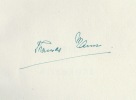




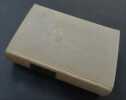
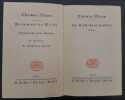
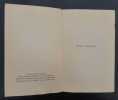
![Der Tod in Venedig. Novelle. [In: Die Neue Rundschau. XXIIIter Jahrgang der freien Bühne]. - [TRUE FIRST APPEARANCE OF ""THE DEATH IN VENICE""]. ...](https://static.livre-rare-book.com/pictures/LLX/55732_1_thumb.jpg)
![Der Tod in Venedig. Novelle. [In: Die Neue Rundschau. XXIIIter Jahrgang der freien Bühne]. - [TRUE FIRST APPEARANCE OF ""THE DEATH IN VENICE""]. ...](https://static.livre-rare-book.com/pictures/LLX/55732_2_thumb.jpg)
![Der Tod in Venedig. Novelle. [In: Die Neue Rundschau. XXIIIter Jahrgang der freien Bühne]. - [TRUE FIRST APPEARANCE OF ""THE DEATH IN VENICE""]. ...](https://static.livre-rare-book.com/pictures/LLX/55732_3_thumb.jpg)
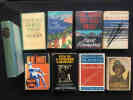
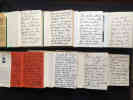
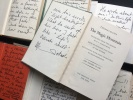

![Réalité sociale et idéologie religieuse dans les romans de Thomas Mann. Les Buddenbrook, La Montagne magique, Le docteur Faustus.. MANN (Thomas)]. ...](https://static.livre-rare-book.com/pictures/VIG/123575_1_thumb.jpg)

